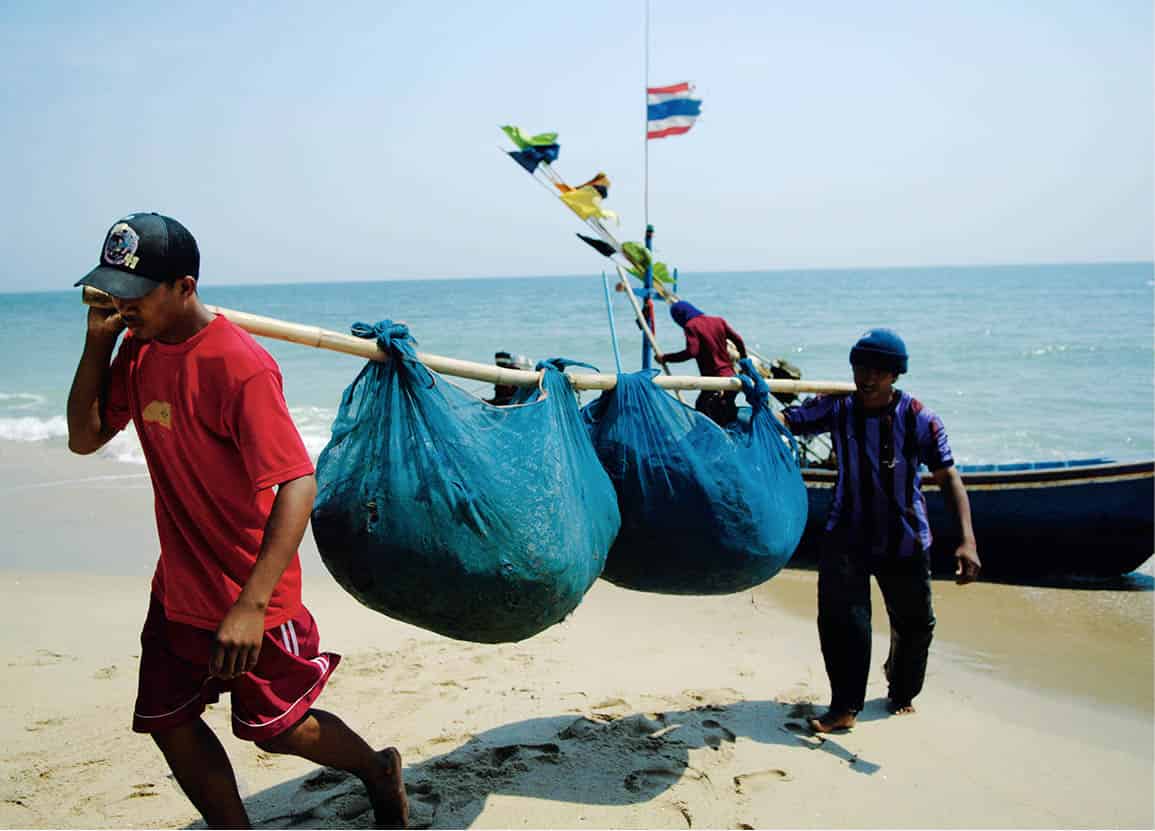The overwhelming majority of Thailand’s population is ethnic Tai, with the Central Tais predominating in the southeastern region between Bangkok and Cambodia, as well as down the peninsula about as far south as Prachuap Khiri Khan. Further to the south, their close cousins, the Southern Tais, gradually increase in numbers until, by Ranong and Surat Thani, they are the majority.
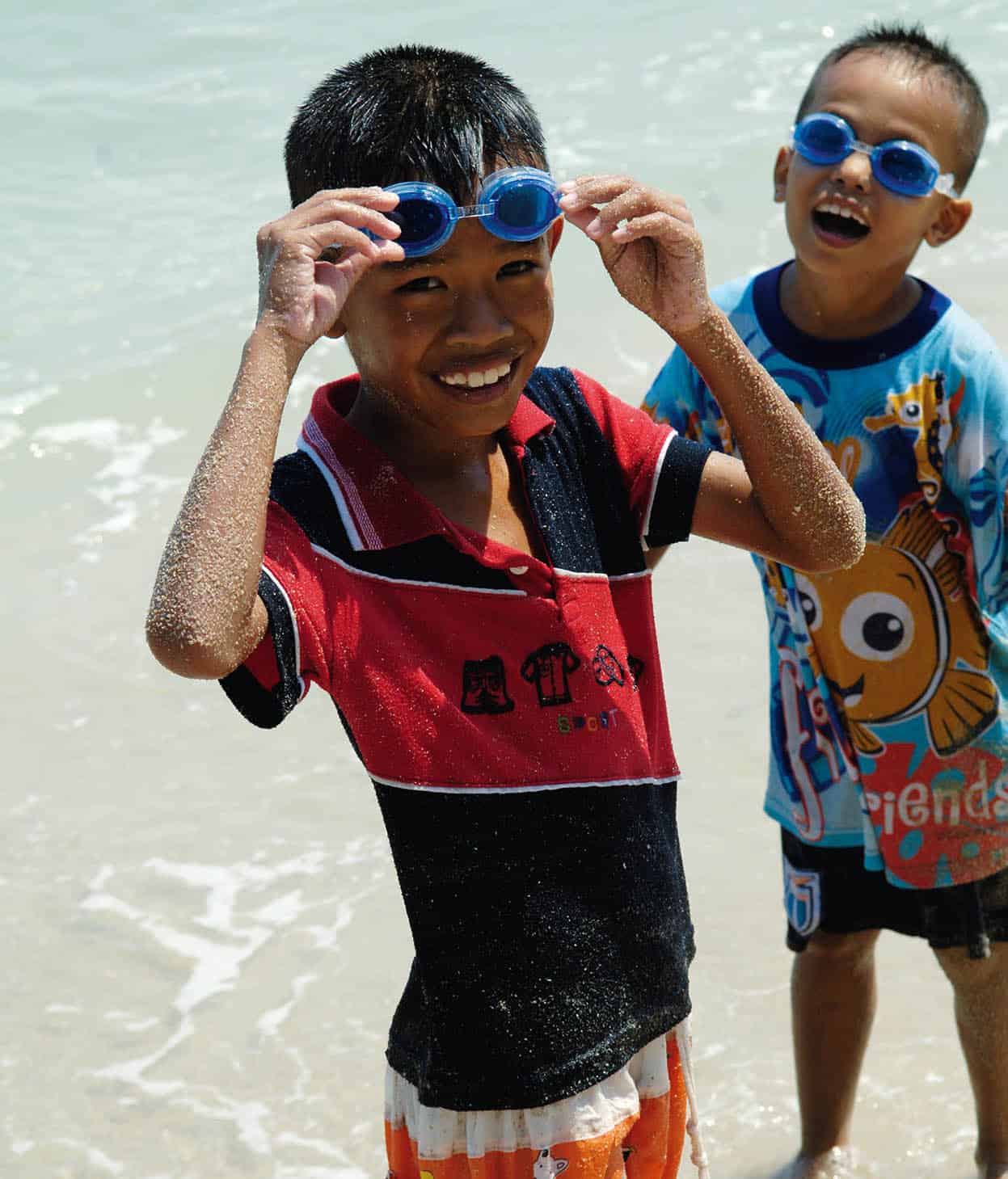
Thai boys playing on the beach in Chan Am.
John W. Ishii/Apa Publications
The Tais are relative newcomers to the region, having slowly migrated south from southern China between the 10th and 12th centuries. By about 1350, they had extended their control over all of present-day Thailand, as well as far into the Malay Peninsula, taking over territory previously controlled by the Khmers, Mon and Malays.
Living among the Tais today are a number of minorities who add considerably to the cultural, religious, linguistic and culinary diversity of the region. There are Vietnamese in the southeast, Malays in the far south, ethnic Chinese in all areas, and aboriginal groups such as the Mani and the ‘sea gypsies’ (for more information, click here), the former in isolated communities in the remoter parts of the mountainous interior and, the latter, along the Andaman Coast. Finally, there are smaller numbers of ethnic Khmer near the Cambodian border, as well as Mon, Burmans and Karen along the frontier with neighbouring Burma.
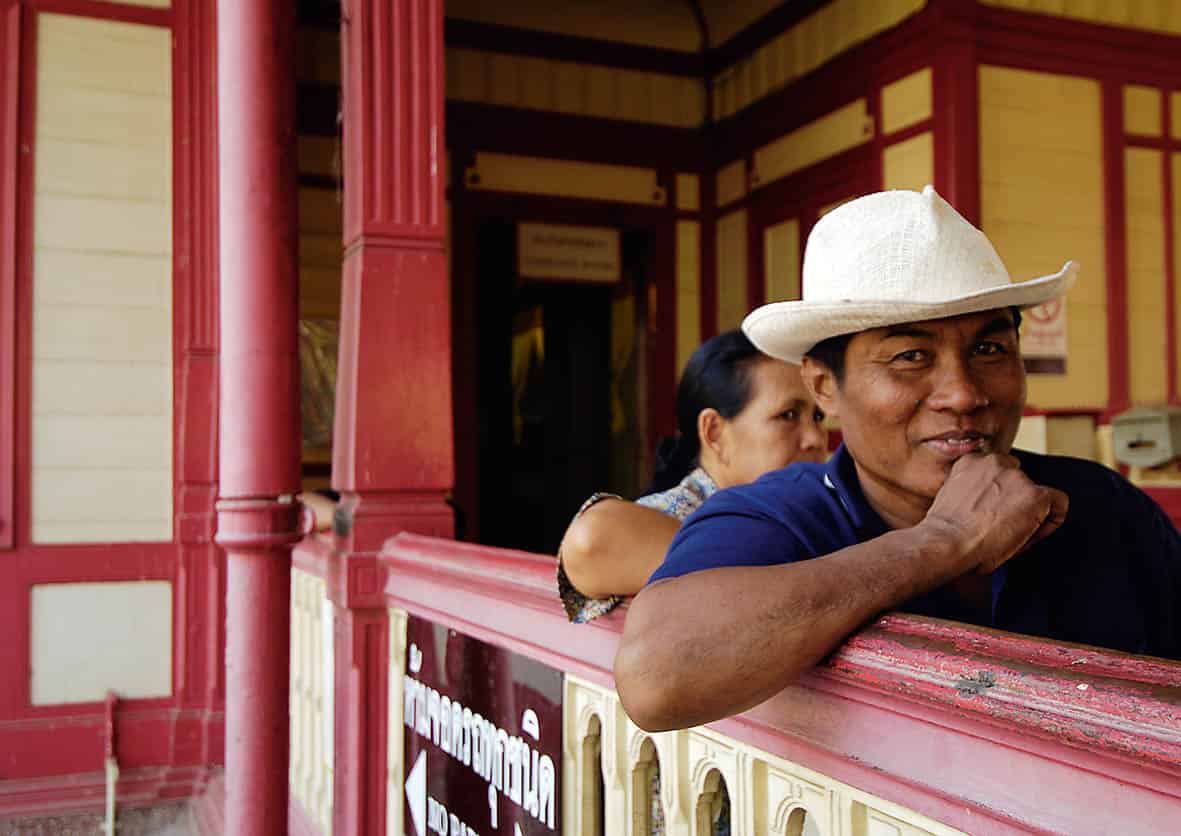
A passenger at Hua Hin station.
John W. Ishii/Apa Publications
The former monarch, King Bhumibol Adulyadej, made a point of embracing all the citizens of Thailand – including non-Tais and non-Buddhists – as Thai. During his long reign, cultural and linguistic diversity was increasingly celebrated rather than discouraged, although some groups, particularly hill tribes along the northern and western borders still don’t enjoy full citizenship rights.
Karen and Mon
West of Bangkok, in the mountainous interior stretching from Ratchaburi to Chumphon and Ranong in the south, the Karen and Mon peoples, often seeking refuge from military persecution in Burma, or simply looking for work and a better life (often illegally), scratch a poor living from the soil. More prosperous descendants of the Mon live in Greater Bangkok, on the island of Ko Kret and further south in Phra Pradaeng, where, in times past, they served as loyal bulwarks against possible Burmese aggression. The Mon, traditionally opposed to Thailand’s old enemy Burma, have therefore been trusted by the Thais.
The term “Tai” is used (loosely) to refer to an ethnolinguistic group of peoples spread across Southeast Asia. “Thai” refers to a citizen of Thailand, regardless of ethnicity or language spoken.
The Muslim community
As one moves further south on the Isthmus of Kra, minarets begin to appear among the palm trees, a clear indication of the presence of Thai-speaking Muslims. Even further south, on the Malaysian frontier, are four provinces with a Malay-speaking Muslim majority. Here, Thai-speaking Buddhists are in a small minority, but control the administration and schools.
The farmers and fishermen of this region are overwhelmingly Malay, yet even among this apparently homogenous group there are differences. To the west, the Andaman Coast province of Satun has the highest Muslim population in Thailand, with more than 80 percent of the total. Yet the people here seem content to be Thai citizens, and have never become involved in the region’s separatist movement.
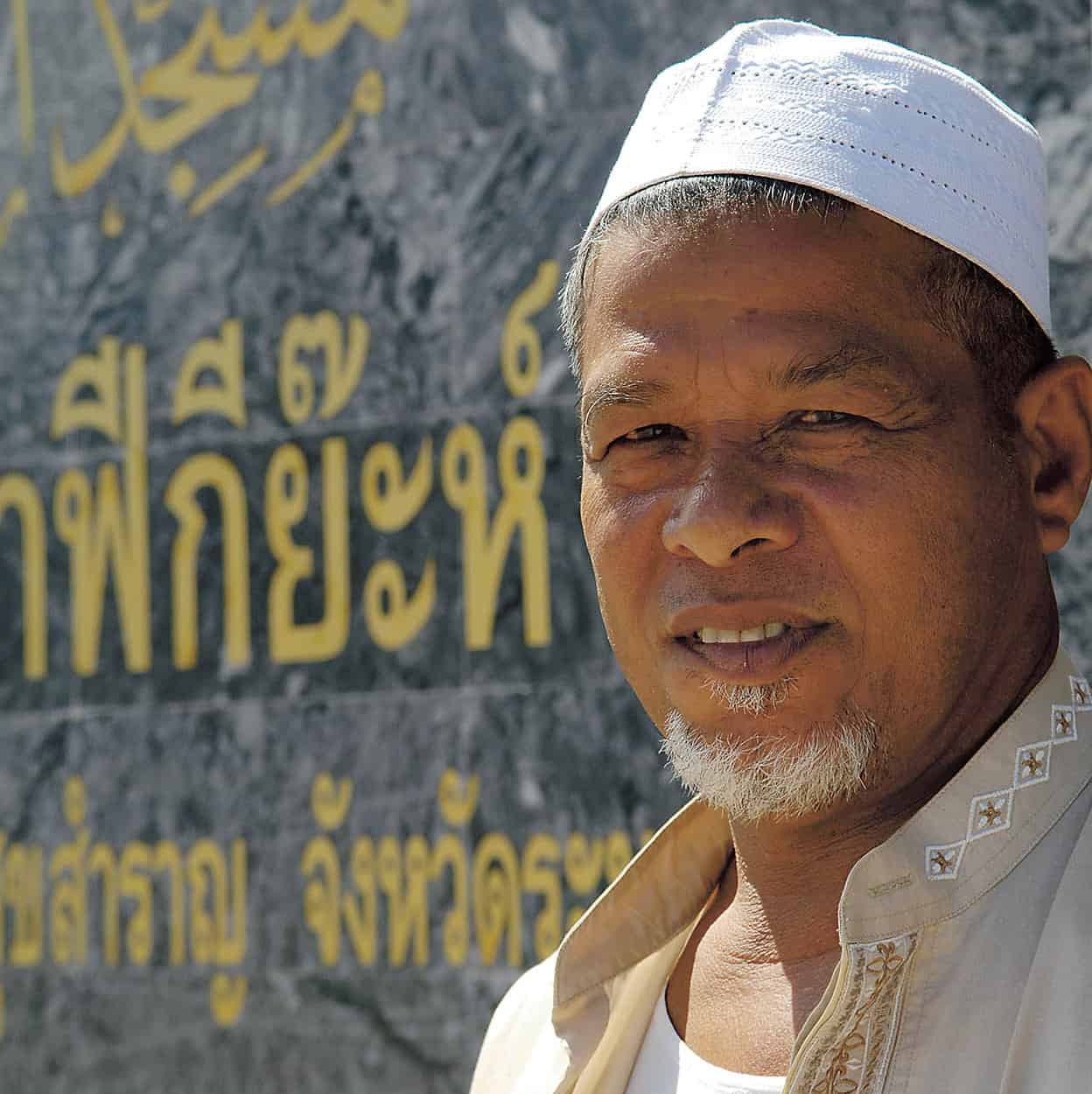
A Muslim man outside a mosque in Khao Lak
John W. Ishii/Apa Publications
To the east, in the predominantly Malay provinces of Pattani, Narathiwat and Yala, disenchantment with rule from Bangkok is more widespread and Islamic practice more rigorous. This parallels the situation in the neighbouring Malaysian state of Kelantan, long the power base of PAS, the conservative Islamic Party of Malaysia.
The Sino-Thais
In the Bight of Bangkok, just off the coast of Chonburi Province, the tiny island of Ko Si Chang was once the main disembarkation point for migrants arriving in Thailand from southern China. It is not surprising, therefore, that Bangkok’s substantial Chinese community (around 14 percent of the population) trace their ancestry mainly to the Guangdong, Fujian and Guangxi provinces. The neighbouring coastal provinces, from Chanthaburi in the east to Petchaburi in the west, have a very Chinese feel to them, too, as do the commercial sections of every provincial capital in the southern peninsular region and the small island towns of the Samui Archipelago.
The impact of trade
The narrow Isthmus of Kra long served as an overland route for merchants seeking to avoid the lengthy and dangerous voyage around the Malay Peninsula. The impact of this overland trade cannot be overestimated. In the early centuries AD, South Indian traders brought Hinduism with them. Buddhism followed, introduced from about 700 AD by Mon traders, then reinforced by missionaries from Sri Lanka. From the 10th century onwards, Islam appeared on the Andaman Coast, carried by Arab and Indian seafarers. Finally, the arrival of Europeans added to the cultural mix. In many ways, commerce made southern Thailand the melting pot it is today.
The ethnic Chinese occupy a unique position in Thai society. Because they have excelled particularly at trading, the Chinese have come to dominate commerce throughout Southeast Asia, often causing resentment and hostility among the host populations. In Indonesia, Malaysia, Myanmar and Vietnam, this has sometimes led to anti-Chinese sentiments, ethnic tensions and occasional expulsions and massacres. There was discrimination against the ethnic Chinese in Thailand in the past, but it rarely led to the violence seen elsewhere in the region. In general, the Tais are well aware of the commercial skills of the overseas Chinese and have tended to intermarry with them rather than victimise or expel them. As a result, the two groups live side by side in almost complete harmony. In urban centres they have intermarried to the extent that most ‘overseas Chinese’ now consider themselves to be as much Thai as Chinese. Making up an estimated 11 percent or more of the total population, these are called luk chin, or ‘children of China’.
The Tamils of Phuket
Most of Phuket’s Tamils migrated from neighbouring Malaysia in the 19th century, though some came directly from India. A number were prosperous moneylenders from the rich Chettiar class, while others found employment on rubber plantations. By the early 20th century, the island had a sizeable Tamil community, though it has since diminished significantly due to remigration. Today, the Tamils live mainly in or near Phuket Town, where community life centres on Thandayudapani Temple on Suthat Road, one of the few functioning Hindu temples in Thailand. Here, the birthday of the god Ganesh is celebrated in August or September.
Today, few can read Mandarin, though many older people still converse in southern Chinese dialects, predominantly Teochew, Hakka and Hainanese. They are very well integrated into Thai society, having adopted Theravada Buddhism and Thai names, cultural values and tastes. In return, the Thais have also absorbed much from the Chinese in matters linguistic, cultural and even culinary. Indeed, so well integrated have the two peoples become – especially in Bangkok and the provincial towns of the south – that it is often impossible to make an absolute distinction between the two. Indeed, Thailand’s approach to its citizens of Chinese origin has been of inestimable value to the nation, and stands as an example to the rest of Southeast Asia.

Members of Bangkok’s Chinese community.
iStock
Southern character
While the people of Thailand all share some common traits, there are interesting cultural distinctions between the southern Thais and those from other regions of the country.
The central and northern Thais often consider the southern Thais to be somewhat ‘hasty’ – they can be quick-tempered and as fiery as their southern cuisine. They also speak faster, using a clipped dialect that, while comprehensible to other Thais, is distinctively southern. From a negative perspective, some southern Thai towns have acquired persistently shady reputations. Chonburi, southeast of Bangkok, has long been known for its chao poh, or ‘godfathers’, gangsters who are often of ethnic-Chinese origin. These Thai mafiosi made huge amounts of money from a mixture of legitimate, semi-legal and openly criminal businesses, running everything from transport companies and petrol stations to underground lotteries, prostitution and cigarette smuggling. These chao poh had their heyday in the 1990s, but many have since met violent ends.
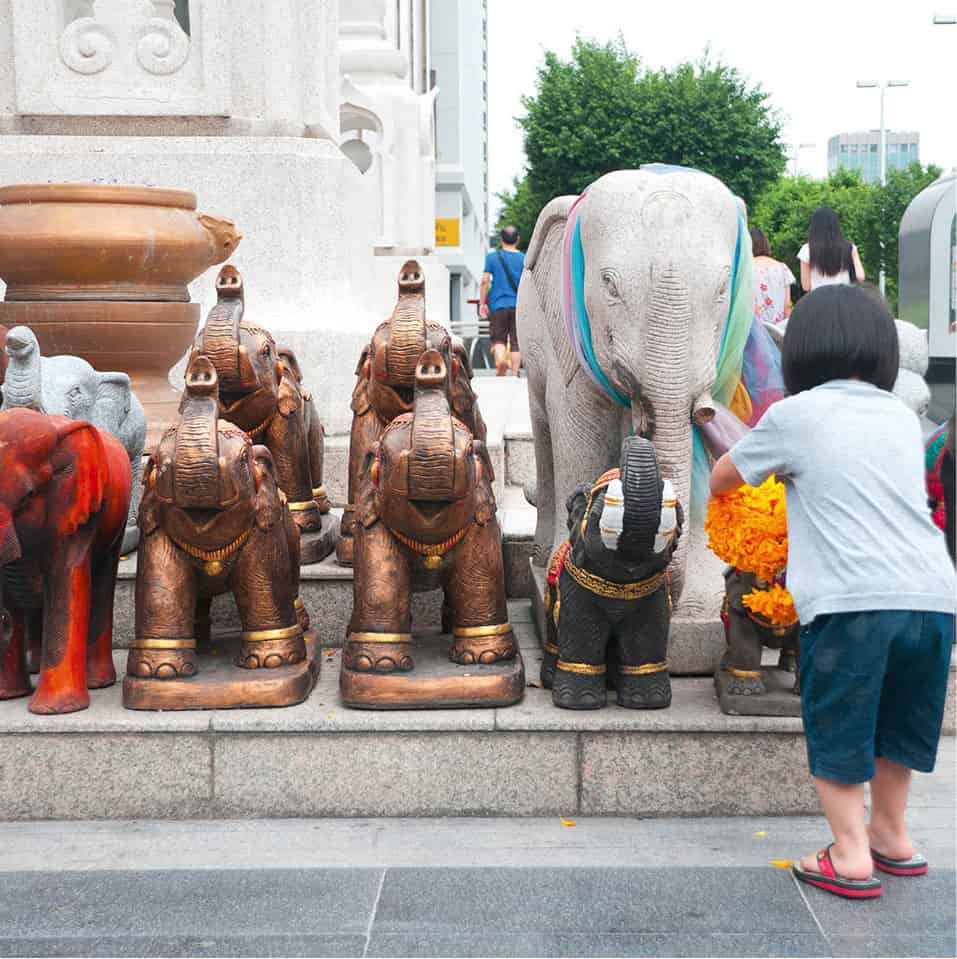
At a Ganesha shrine, Bangkok.
Dreamstime
The infamous Sia Yai of Angthong, for instance, was blown apart by a mine outside the provincial courthouse in 1989. Sa Jiew of Chonburi was killed in 1991 when his Mercedes was blown off the road by a rocket-propelled grenade. To counter the constant threat of assassination, many chao poh used bulletproof cars and employed Uzi-toting gunmen – many of whom came from Nakhon Si Thammarat, a southern town famed across Thailand for the ruthlessness of its gunmen.
In recent years, the power of the chao poh has diminished considerably, partly through police action and partly because this kind of lawless behaviour has become unacceptable to many of today’s urban Thais. Still, Chonburi and Nakhon Si Thammarat may have to wait for some years before their reputation for lawlessness disappears.
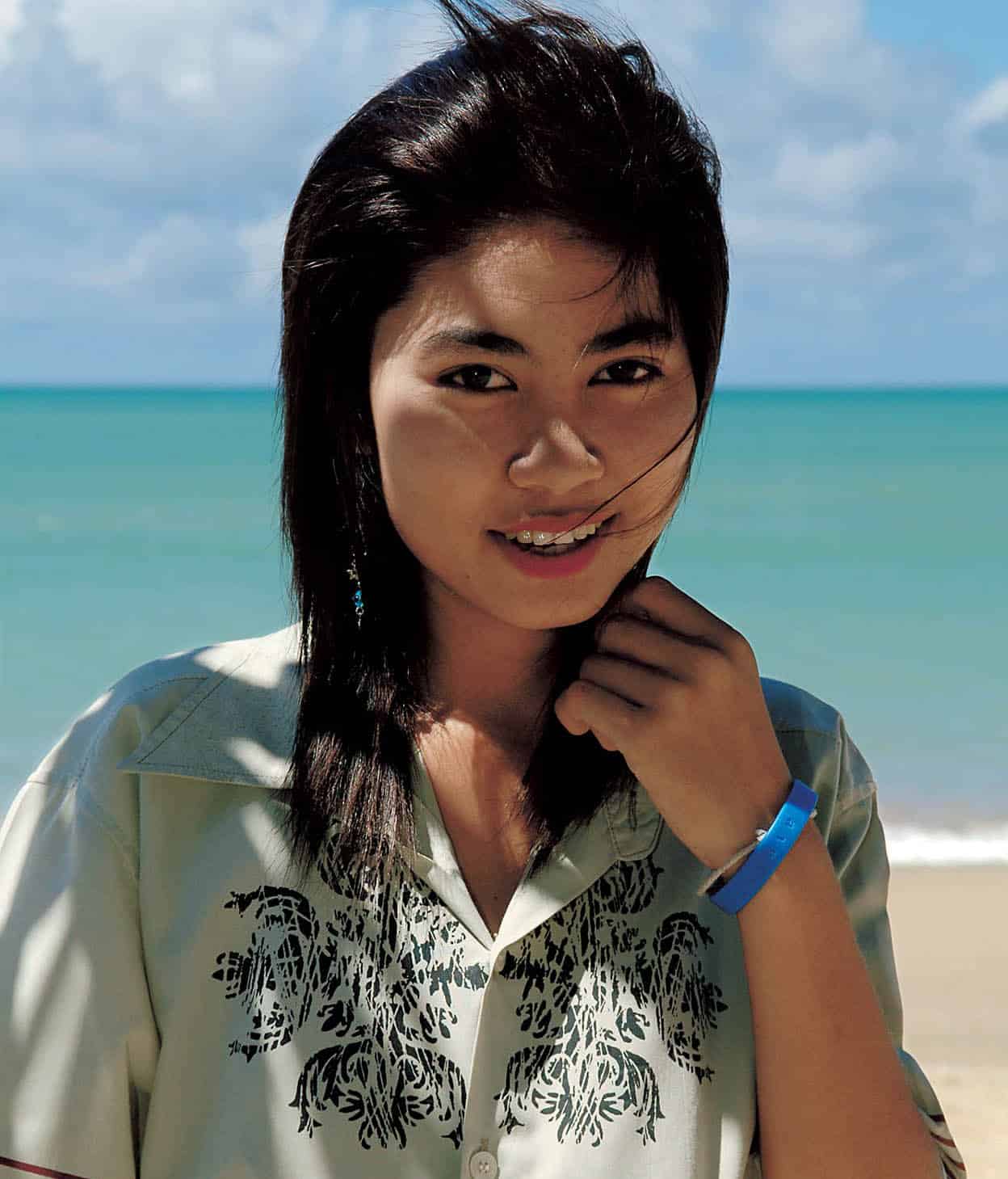
The Thais’ friendly demeanour is well known.
John W. Ishii/Apa Publications
Of course, not all southern Thais are quick-tempered, and the great majority are law-abiding citizens. For their part, they sometimes see northern and northeastern Thais as too easy-going and unadventurous, lacking the southern ambition.
National ethos
Yet, despite these apparent differences, a shared reverence for the monarchy and a fervent belief in religion serve as the unifying glue that binds Thai society. A pride in the country’s long independence has also bred a quiet cultural confidence in Thais, whether southern or otherwise.
One of the nation’s greatest treasures is intangible – the famous Thai appreciation of sanuk, or ‘fun’ – that is, enjoying life. Perhaps less appreciated by outsiders, but no less essential, is the Thai trait of supap, or ‘politeness’. If you are consistently smiling and polite, life in Thailand – even in Chonburi and Nakhon Si Thammarat – should be plain sailing.
Thailand’s Sea Gypsies
Southern Thailand is home to a substantial community of people who, for centuries, have chosen to live and work on the waters of the Andaman Sea.
The ‘sea gypsies’ of southern Thailand, known in Thai as chao lay, or ‘people of the sea’, are divided into three groups, though they sometimes intermarry and generally consider themselves as one kindred people. Numbering between 4,000 and 5,000, they live only along the Andaman Sea, either in huts by the shore, or on itinerant craft that ply the coastal waters south from Ranong to Ko Tarutao.
The Urak Lawoi people, numbering around 3,000, form the largest sea-gypsy group. They live in simple shacks on beaches from Phuket to Ko Tarutao. Their two largest settlements are at Ko Sireh and Rawai in the southeast of Phuket, both of which they fight to keep as their ancestral land has been bought by a major real estate developer.
Two smaller groups also exist – the 1,000-strong Moklen community living between Ko Phra Tong, near Takua Pa, and Phuket, and the 500 or so Moken, living north from Ko Phra Thong to the Burmese frontier. The Moken are the least adapted to modern life; they still use dugout canoes and avoid contact with settled people, especially local authorities. The Thais distinguish them from the more assimilated groups by calling them chao ko tae or ‘real island folk’. The Moken rarely build on land, preferring a completely nomadic existence on the Andaman Sea.
Indigenous people
An indigenous people, it is likely the chao lay people were among the earliest inhabitants of the region, predating the arrival of the Tais from the north by many centuries. They are shorter, stockier and darker than the Tais, are related to the ‘Sea People’ of Malaysia, and perhaps also to the Mani or Negrito peoples who inhabit the southern Thai interior. Little is known of the chao lay’s past as they have no written language or records. Their spoken languages are related to Malay, though the Moken have borrowed more vocabulary from Thai and Burmese.
Chao lay religion is neither Buddhist nor Muslim, but rests on spirits associated with the wind, waves and islands. The Moken venerate the sea, and every year, during the full moon of the fifth lunar month, they stop working for three days and nights to feast, dance, sing and drink alcohol. The Moken say that their earliest ancestor was washed ashore, but on landing refused to become Muslim or Buddhist, choosing instead to return to the sea. Certainly, the sea gypsies remain a people apart, living on the fringes of southern Thai society. They are some of the poorest and least technologically sophisticated people in the country.
Yet the chao lay have some natural advantages. During the 2004 tsunami, although many sea-gypsy households sustained damage and some loss of life, they seemed to have instinctively understood the cataclysmic event better than their Thai neighbours, many saving themselves by moving early to higher ground.
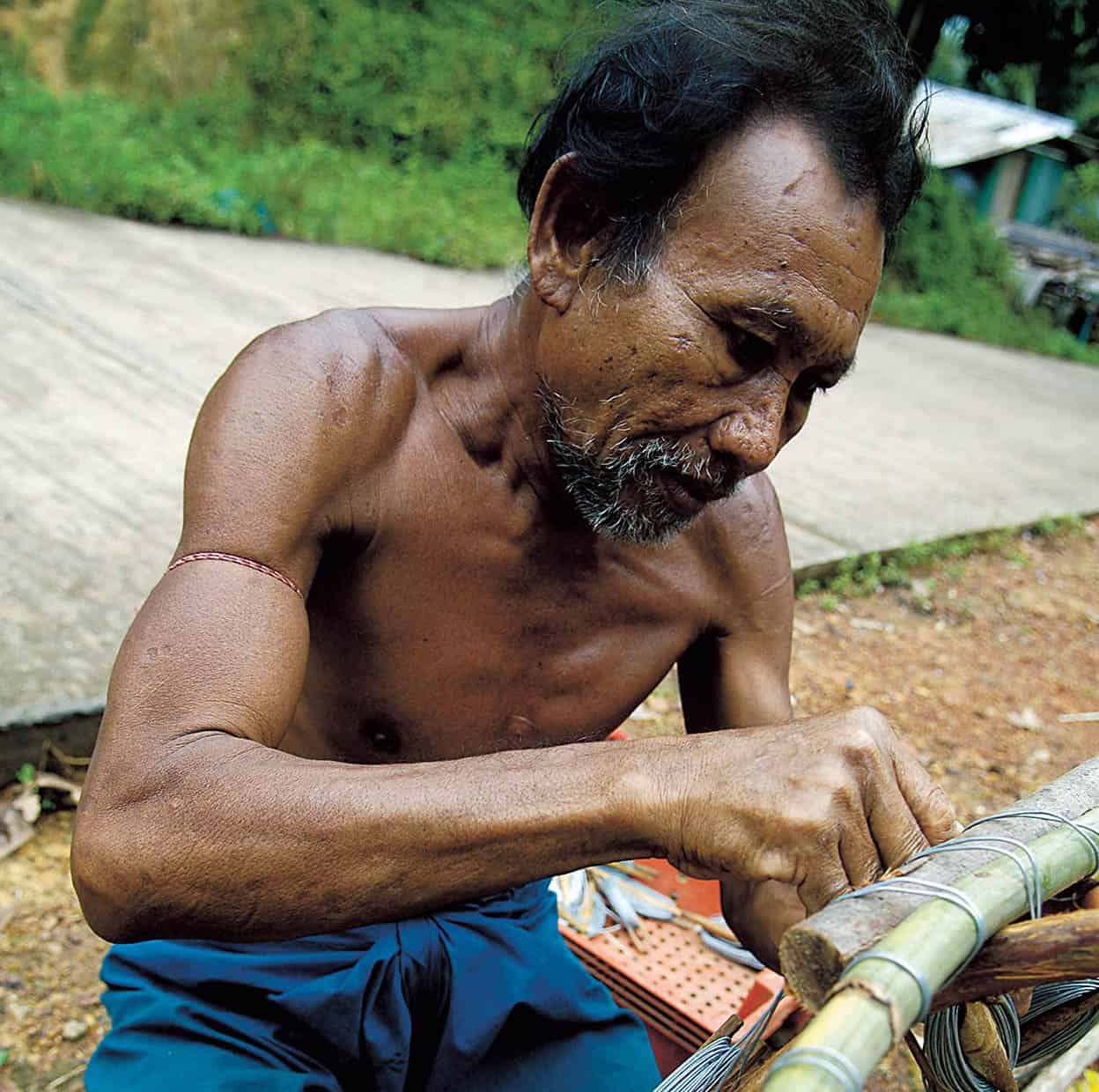
A sea gypsy on Ko Lanta mending nets.
John W. Ishii/Apa Publications
